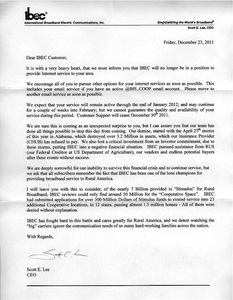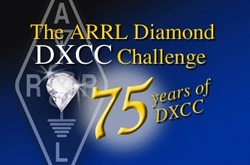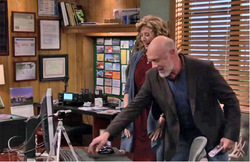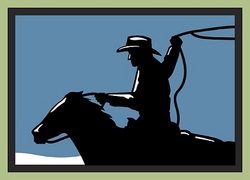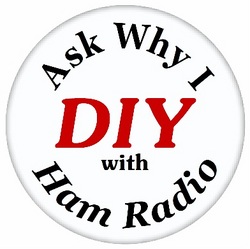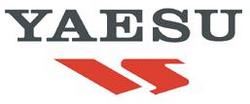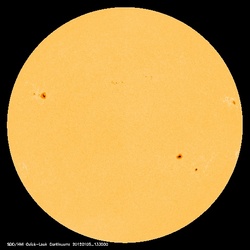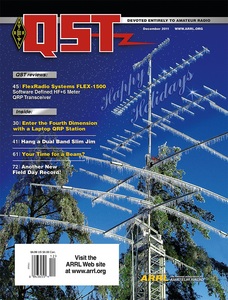 January 5, 2012 John E. Ross, KD8IDJ, Editor
| ||||||||||||||||
+ Available on ARRL Audio News. + BPL Provider IBEC Announces Shutdown
IBEC -- one of the very few remaining operators of Access BPL systems -- has announced that it is closing down. In an undated announcement that appeared on the IBEC website, the company announced that it has "no other option than to close our doors and cease operations." IBEC claims that it cannot recover financially from the April 2011 tornadoes in Alabama that "ravished [sic] some of our major service areas." IBEC provided Internet service via broadband over power lines (BPL) to rural communities.
"While we regret the loss of jobs brought about by IBEC's BPL business failure, in the long run the rural areas that IBEC was trying to serve will be better served by broadband technologies that are superior to BPL and do not pollute the radio spectrum," said ARRL Chief Executive Officer David Sumner, K1ZZ. "While initially IBEC was cooperative in addressing the ARRL's concerns about interference to licensed radio services -- including Amateur Radio -- the ARRL was dismayed to find that the systems as actually deployed fell short of meeting even the inadequate requirements of the FCC's rules. We hope that this latest in the long string of Access BPL failures will persuade the few remaining fans of BPL to turn their attention elsewhere." Read more here. + On the Air: ARRL Announces Diamond DXCC Challenge 2012 is the 75th anniversary of the ARRL's DXCC Award, the world's preeminent DXing award. To celebrate this important milestone, the ARRL has gone back to the beginning -- the 1937 DXCC List.The Diamond DXCC Challenge will test DXers ability to contact all the 231 entities on the original DXCC List.
We tried to find corresponding entities today that would represent the places listed in 1937, and we were mostly successful. There are a couple of places that were merged, like French and British New Hebrides, and the Papua and New Guinea Territories. In those places, for 2012 if you work a YJ or a P29 (on the main island of New Guinea) you will get credit for working two entities! Many other oddities are sprinkled throughout the list, too. Returning to the air in 2012 will be the Canal Zone (any HP operating within 8 kilometers of the Panama Canal), the Cities of Gdansk, Poland, as well as Ifni, Morocco and Balochistan. For some entities that now consist of multiple countries, you may work any of today's entities to qualify for that single 1937 country. For example, French Equatorial Africa will be considered worked if you log a station in TL, TN, TR or TT in 2012. The Diamond DXCC country tables show the current entity names and prefixes that qualify for the 1937 countries. Read more here. + Amateur Radio in Space: ARISSat-1 Re-enters Earth's Atmosphere, Falls Silent According to AMSAT, ARISSat-1 stopped transmitting on the morning of January 4. It is believed that the satellite re-entered the Earth's atmosphere around 0700 UTC (+/- three hours) and was destroyed soon after. Telemetry reports showed that the temperature aboard ARISSat-1 had been rising as the atmospheric drag began to affect the satellite The predicted decay location is an open part of the South Atlantic, well west of Angola.
The last telemetry reports indicated that the internal temperature had topped 167 degrees Fahrenheit and was rising rapidly. Konstantin Vladimirovich, RN3ZF, sent a reception report of a pass at 0842 UTC and stated, "The telemetry was absent, voice messages were not legible, very silent and interrupted. Most likely, I saw the last minutes in the life of the satellite." The last full telemetry captured was received from ground stations as the satellite passed over Japan at 0602 UTC on January 4. ARISSat-1 was deployed from the International Space Station on August 3, 2011 during EVA-29 on by Cosmonaut/Flight Engineers Sergei Volkov, RU3DIS, and Alexander Samokutyaev. The satellite carried a student experiment from Kursk State University in Russia that measured atmospheric density. Students from around the world provided the voices for the FM voice announcements. AMSAT President Barry Baines, WD4ASW, said that ARISSat-1 marked a new type of satellite that captured the attention of the national space agencies around the world. "With ARISSat-1, we have we have been able to design, launch, and operate a unique educational opportunity," he explained. "By designing an educational mission aligned with NASA's Science, Technology, Engineering and Mathematics goals, radio amateurs around the world have been able enjoy a new satellite in orbit." ARISSat-1 achieved several "firsts" for Amateur Radio in space, including the first flight test of the AMSAT Software Defined Transponder, which included an FM voice downlink cycling between student messages, spoken telemetry and SSTV; a 16 kHz bandwidth linear transponder; a CW beacon carrying telemetry and call signs of radio amateurs (noting their significant contributions to Amateur Radio in space) and a robust, forward-error-corrected 1kbps BPSK digital downlink carrying satellite telemetry and Kursk experiment telemetry. + Ham Radio in Hollywood: Amateur Radio Makes Its Debut on Last Man Standing
If you watched the January 3 episode of Last Man Standing -- the ABC hit situation comedy starring Tim Allen as Mike Baxter, KA0XTT -- you were in for a treat. While this episode didn't feature Amateur Radio per se, it did show Mike's shack in the background. Viewers could see the DXCC, Worked All States, Worked All Continents and the Morse Code Proficiency Certificate -- all provided by the ARRL -- in the first scene. Later on in the show, Mike records his video blog. Sharp-eyed viewers spotted the 2012 ARRL Handbook underneath the mini-tripod, next to issues of QST!
The episode airing on January 17 will introduce Mike Baxter as KA0XTT. According to Last Man Standing Producer John Amodeo, NN6JA, Mike will have a QSO on the show. "We had two Amateur Extra class staff members complete a QSO on 10 meters and we recorded it," Amodeo explained. " Unfortunately, we were set up on a stage that is basically a Faraday cage. The very QRP signal made it radio-to-radio. We varied the RIT [receiver incremental tuning] to give it a little extra SSB sound, but I don't think the signal made it much past the stage walls. The recording will be on the show. We thought our ham viewers would get a kick out of it. Non-hams will think it's just distorted." Read more here. On the Air: Round Up Those Digital QSOs in the 2012 ARRL RTTY Roundup We're in the heart of the 2011-2012 contest season and this weekend offers the first major event of 2012: The ARRL RTTY Roundup. According to ARRL Contest Branch Manager Sean Kutzko, KX9X, participation in the digital modes has been growing at an amazing rate. "It's not difficult to get on the digital modes," he explained. "All it takes these days is a computer, a piece of free software and an interface to connect your computer to your rig. It's never been easier!"
Because of that ease, log submissions for the RTTY Roundup have increased about 33 percent since 2007, with 1539 logs received in 2011. "There are plenty of stations to work, including lots of DX," Kutzko said. "Many stations have achieved RTTY DXCC and RTTY WAS in a weekend. You can work toward other awards as well, such as the ARRL Triple Play Award, earned for working all 50 states on CW, SSB and digital modes (including RTTY) and confirming all of those QSOs via Logbook of The World (LoTW). Do you think you have what it takes to set a new record score for your ARRL Division or Section? Check the record scores for the RTTY Roundup and see if you can beat the best! The 2012 ARRL RTTY Roundup runs from 1800 UTC Saturday, January 7 through 2359 UTC Sunday, January 8. Logs may be submitted electronically via e-mail. Paper logs should be sent to ARRL RTTY Roundup, 225 Main St, Newington, CT 06111. All logs must be postmarked no later than 2359 UTC Tuesday, February 7, 2012. DIY: ARRL Launches New DIY Campaign
The ARRL Public Relations Department has released the Do-It-Yourself (DIY) suite of interrelated promotional materials aimed at exposing the growing Do It Yourself/Maker community to Amateur Radio opportunities. The DIY movement is nothing new to Amateur Radio. For more than a century, hams have been working in basements and attics, taking things apart and putting them back together in new ways, just for the fun of it. Meanwhile, there has been a growing population of DIY hobbyists who do not know about the opportunities of Amateur Radio. To reach this growing group, the ARRL Public Relations Department has created an entirely new set of campaign materials for ARRL Public Information Officers, groups and individual hams to use in reaching out to the DIY/Maker community. Bill Pasternak, WA6ITF, and Dave Bell, W6AQ, were recruited to create the new video. Recruiting volunteers throughout 2011, the duo shot more than 65 hours of high-definition video, and then edited it down to a mere 8 minutes. Titled The DIY Magic of Amateur Radio, it shows ham-makers projects from around the country. Read more here. + Yaesu's Amateur Radio Division Breaks with Motorola, Changes Name to Yaesu Musen
After four years under the Motorola umbrella, Yaesu has split from that company. According to Vertex Standard President and Chief Executive Officer Jun Hasegawa, effective January1, 2012, Motorola will keep the Vertex Standard Land-Mobile Division, while the amateur, marine and air-band will be under the Yaesu Musen banner. The new company will be known as Yaesu USA in the US. Read more here. + On the Air: ARRL 10 Meter Contest Sets Record As of January 5, almost 5200 logs have been received for the ARRL 10 Meter Contest. Contest Manager Sean Kutzko, KX9X, is happy to have sunspots back: "This just goes to show what sunspots can do for activity. When the solar flux climbed to 190 in September, it was like the first warm day after a long winter; people came out to play -- and play they did, in unprecedented numbers! Activity during this contest season has been nothing short of tremendous, and it seems to have reached a zenith for the ARRL 10 Meter Contest. Old Timers and new licensees from all around the world got on the air and had one heck of a good time on 28 MHz the second weekend in December, shattering the participation record by more than 2300 logs. And we still have a week to go before the log submission deadline!" + DXCC News: 2011 Sees Tremendous Increase in DXCC Applications With the coming of more sunspots, comes more DX. And when more amateurs are working DX, that means the ARRL's Membership and Volunteer Programs Department -- especially the DXCC Desk and the ARRL Incoming and Outgoing QSL Bureaus -- goes into high gear.
"In 2011, we saw an increase in the number of cards we received from ARRL members that were sent to foreign QSL bureaus, as well as the number of cards we sent out to the bureaus," said DXCC Manager Bill Moore, NC1L. "In addition, the number of DXCC applications -- including those for initial awards and endorsements -- also increased." As the number of QSL cards has increased, so have the number of DXCC applications. In 2010, the DXCC Desk processed 7134 applications for initial awards and endorsements; these 2010 applications included 853,462 QSOs. In 2011, the DXCC Desk processed 11,175 applications, containing 1,250,864 QSOs. "Comparing 2010 to 2011, this represents a 47 percent increase in the number of QSOs and a 57 percent increase in the number of applications," MVP Administrative Manager Sharon Taratula explained. "With all of the year's applications not yet fully processed, we've seen a substantial increase in the number of QSOs over 2010." "Through December 31, 2011, the ARRL Outgoing QSL Bureau received 802,500 cards destined for foreign QSL bureaus from ARRL members in the US," Taratula said. "This represents an increase of 4 percent over the 2010 number of about 771,900 cards. In 2011, the ARRL shipped 799,675 cards -- or close to 5400 pounds of cards -- to foreign bureaus." Read more here. + On the Air: ARRL Requests Feedback for 60 Meter Band Plan In November 2011, the FCC released a Report & Order detailing new rules for the 5 MHz (60 meters) Amateur Radio band. These rules have not yet been published in the Federal Register. In order to be official, the rules must be published in the Federal Register and will take effect 30 days after the publication date. The R&O brings with it a number of changes for 60 meter operators. Considering the expected increase in 60 meter activity when the R&O finally takes effect, the ARRL is asking for feedback to assist in crafting a proposed band plan. Read more here. Ham Radio in Hollywood: Amateur Radio a Plot Point in Major Motion Picture
According to previews, the plot of the movie Journey 2: The Mysterious Island -- set to be released February 10 -- hinges on Amateur Radio. The movie's hero Sean Anderson (played by Josh Hutcherson) receives a coded distress signal that comes from a mysterious island where no island should exist. Sean decides to follow the signal with the unwilling assistance from his stepfather Hank (played by Dwayne "The Rock" Johnson). Sean explains to Hank why he wants to hunt down the signal: "A few nights ago, a radio signal got sent out from these coordinates. It could be the mysterious island that Jules Verne wrote about." Hank replies: "You think you're gonna travel halfway around the world and meet up with some lunatic who's messing around on a ham radio?" "That's not some lunatic," Sean says. "That's my grandfather." Read more here. Ham Radio in Hollywood: Can I Have "Amateur Radio" for $800, Alex?
If you were watching the popular television game show Jeopardy! -- where contestants have to answer in the form of a question -- on December 15, you might have noticed there was a question featuring Amateur Radio. In the first round, returning champ Boomie Aglietti was playing the category "Pastimes" when he encountered this "answer" worth $800: "The FCC assigns call signs, like N8DNR, to use in this hobby." Aglietti answered correctly with "ham radio." N8DNR is the call sign of Debbie Dorfman of West Bloomfield, Michigan. Debbie is the mother of Stephen Dorfman, N6DIW (SK). Stephen was a writer for Jeopardy! from 1984 until he passed away in 2004 at age 48 due to complications from cancer. According to the New York Times, Dorfman was Jeopardy!'s longest serving and most prolific writer, with more than 50,000 clues to his credit. As part of a team of writers, he won six Daytime Emmy Awards for special-class writing, given for shows that do not fit into traditional categories. On the Jeopardy! episode that aired January 3, 2008, another Dorfman call sign was featured -- this one of Stephen's father Neil -- also for $800, in the category "If You're...": "...using a call sign like K8RX, you're engaged in this hobby." Solar Update
Tad "We all live for the Sun" Cook, K7RA, reports: We're continuing to see good conditions, although sunspot activity has declined a bit. The average daily sunspot numbers for December 29-January 4 declined nearly 20 points (when compared to the previous seven days) to 88.1; this is the lowest reported weekly sunspot number average since September 2011. The average daily solar flux was off 6.4 points to 143.1. Another problem seems to have cropped up with NOAA reporting of data that we use in this bulletin. Last month, the sunspot numbers had to be corrected. Now it appears that some of the geophysical data does not check out. Check the planetary A index for the last few weeks of December 2011 here and check the same dates here. They should match, but they don't (unless the problem has been corrected by the time you read this). But the numbers for all of 2011 match what we have reported in the bulletin, and I suspect it is the correct version. The near term outlook is for solar flux at 140 on January 5-6, 135 on January 7-8, 130 on January 9-11, 125 and 135 on January 12-13, and then back to 140 on January 14-21. The next short term peak is expected at 150 on January 24-26. The expected planetary A index for January 5-9 is 5, 8, 15, 10 and 8, then back down to 5 on January 10-27. That predicted A index of 15 on January 7 -- if accurate -- will be the highest since October 25, when it was 27, and 31 the day before. That activity was sparked by a coronal mass ejection that affected earth around 1800 UTC on October 24. Look for more information on the ARRL website on Friday, January 6. For more information concerning radio propagation, visit the ARRL Technical Information Service Propagation page. This week's "Tad Cookism" is brought to you by The Sunrays' I Live for the Sun. ARRL Congratulates: Ashraf Abuelhaija and Klaus Solbach, DK3BA, Win December QST Cover Plaque Award
The winners of the QST Cover Plaque Award for December are Ashraf Abuelhaija and Klaus Solbach, DK3BA, for their article "An Inverted V Wire Yagi with Switchable Pattern Rotation for 14 MHz." Congratulations Ashraf and Klaus! The QST Cover Plaque award -- given to the author or authors of the best article in each issue -- is determined by a vote of ARRL members on the QST Cover Plaque Poll web page. Cast a ballot for your favorite article in the January issue today. Dayton Hamvention: Nomination Deadline for Dayton Hamvention Awards Approaching
It's not too late to nominate individuals and clubs for the 2012 Dayton Hamvention® awards. The deadline to make your nominations for the Amateur of the Year Award, Special Achievement Award, Technical Excellence Award, and the Amateur Radio Club of the Year Award is Sunday, January 15. The winners will be recognized at the 2012 Dayton Hamvention, May 18-20. Read more here. This Week in Radiosport This week:
Next week:
All dates, unless otherwise stated, are UTC. See the ARRL Contest Branch page, the ARRL Contest Update and the WA7BNM Contest Calendar for more information. Looking for a Special Event station? Be sure to check out the ARRL Special Event Stations Web page. Upcoming ARRL Section, State and Division Conventions and Events
To find a convention or hamfest near you, click here. ARRL -- Your One-Stop Resource for Amateur Radio News and Information Join or Renew Today! ARRL membership includes QST, Amateur Radio's most popular and informative journal, delivered to your mailbox each month. Subscribe to NCJ -- the National Contest Journal. Published bi-monthly, features articles by top contesters, letters, hints, statistics, scores, NA Sprint and QSO Parties. Subscribe to QEX -- A Forum for Communications Experimenters. Published bi-monthly, features technical articles, construction projects, columns and other items of interest to radio amateurs and communications professionals. Free of charge to ARRL members: Subscribe to the ARES E-Letter (monthly public service and emergency communications news), the ARRL Contest Update (bi-weekly contest newsletter), Division and Section news alerts -- and much more! Find us on Facebook. Follow us on Twitter. ARRL offers a wide array of products to enhance your enjoyment of Amateur Radio Donate to the fund of your choice -- support programs not funded by member dues! Click here to advertise in this newsletter. | ||||||||||||||||

